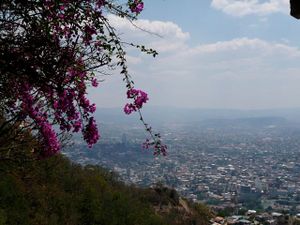Group L - Collaborative Climate Adaption Project: Difference between revisions
No edit summary |
|||
| Line 35: | Line 35: | ||
=== Rationale: Why have you selected this case study area? === | === Rationale: Why have you selected this case study area? === | ||
We decided on the Maldives for our case study, as it is a country that is very much defined by it s topography and geographical references. More so than continental countries, island states have very limited natural resources and there for have to either rely on trade from the mainland or provide a service to generate wealth (e.g tourism). Today tourismis the biggest industry and accounts for more than 25% of the GDP. The second biggest is the Fishing industry, which unlike the tourism has a much deeper grasp in the maldivian culture. | |||
=== Authors' perspectives === | === Authors' perspectives === | ||
Revision as of 13:52, 2 December 2012
| Area | Kaafu Atoll | |
| Place | Male | |
| Country | The Maldives | |
| Topic | Rising sea levels and polluting of the vital marine life | |
| Author(s) | Dario Tambur, Keith Gagan Ishwar Singh and Oliver Linder | |

| ||
|
| ||
Rationale: Why have you selected this case study area?
We decided on the Maldives for our case study, as it is a country that is very much defined by it s topography and geographical references. More so than continental countries, island states have very limited natural resources and there for have to either rely on trade from the mainland or provide a service to generate wealth (e.g tourism). Today tourismis the biggest industry and accounts for more than 25% of the GDP. The second biggest is the Fishing industry, which unlike the tourism has a much deeper grasp in the maldivian culture.
Authors' perspectives
- What theoretical or professional perspective do you bring to the case study?
Landscape and/or urban context
- Biogeography, land use patterns, cultural features, overall character, history and dynamics
- ratio of green/blue and sealed/built-up areas
Illustration: Map; sketches; short descriptive analyses
Cultural/social/political context
- Brief explanation of culture, political economy, legal framework
Illustration: Bullet points, image, background notes
Local Climate
- What are the climatic conditions at present? Have there been extreme weather events in the near past?
- Which changes are expected? Is there any evidence?
Illustration: Table or time line
Analysis of vulnerability
- If you consider these potential changes - which aspects/functions of your case study would be affected?
Illustration: Map/diagram/sketches/photos/background notes
Proposals for Climate Change Adaption
- How could your case study area become more resilient to climate change?
- Which measures would need to be taken to adapt to the new situation?
- How could you assure sustainability of these measures?
- Please describe 2-3 measures
Proposals for Climate Change Mitigation
- Which measures would need to be taken to reduce greenhouse gas emissions and other drivers of climate change within your case study area?
- How could you assure sustainability of these measures?
- Please describe 2-3 measures
Your scenario
- How will this area look like in 2060?
- Please forecast one potential future development taking climate change into account
Illustration: Map/diagram/sketches photos and background notes
What can be generalized from this case study?
- Are there any important theoretical insights?
- Which research questions does it generate?
- Short statement plus background notes
Image Gallery
- Yourimage.jpg
your image text
- Yourimage.jpg
your image text
- Yourimage.jpg
your image text
- Yourimage.jpg
your image text
- Yourimage.jpg
your image text
- Yourimage.jpg
your image text
- Yourimage.jpg
your image text
- Yourimage.jpg
your image text
References
Please add literature, documentations and weblinks
About categories: You can add more categories with this tag: "", add your categories